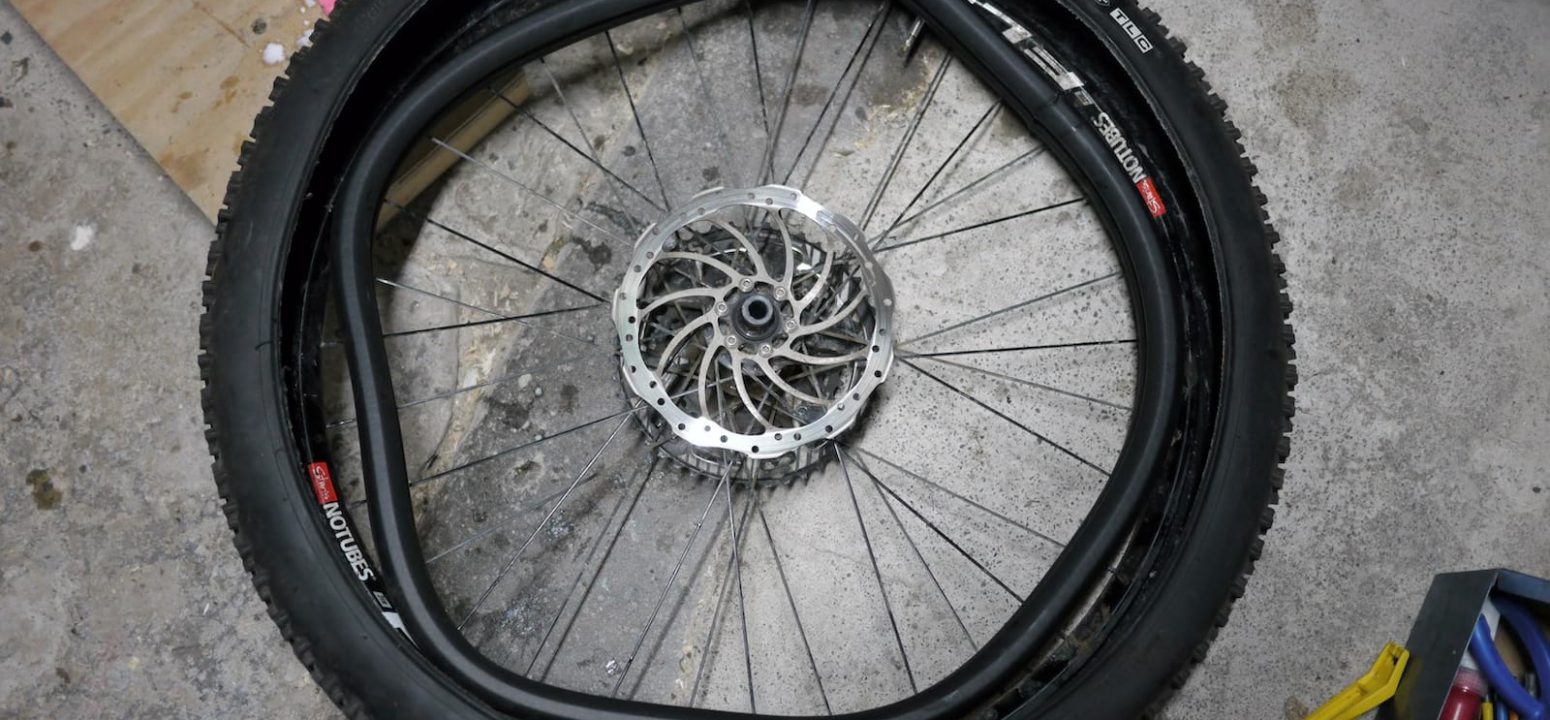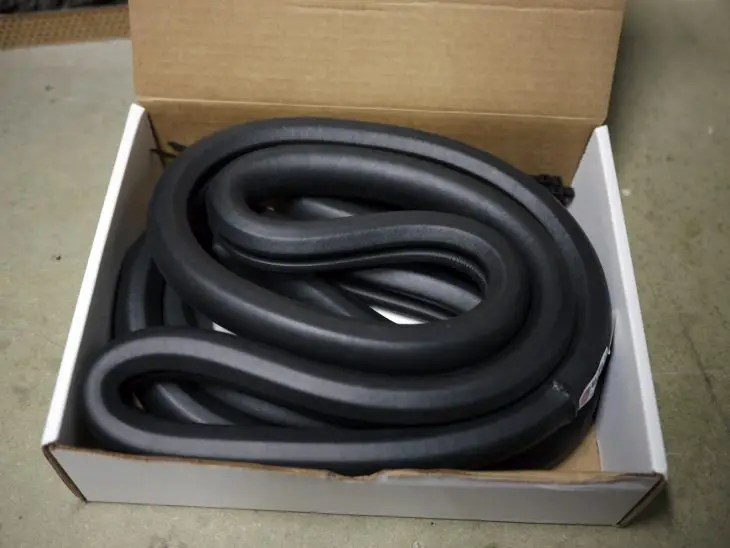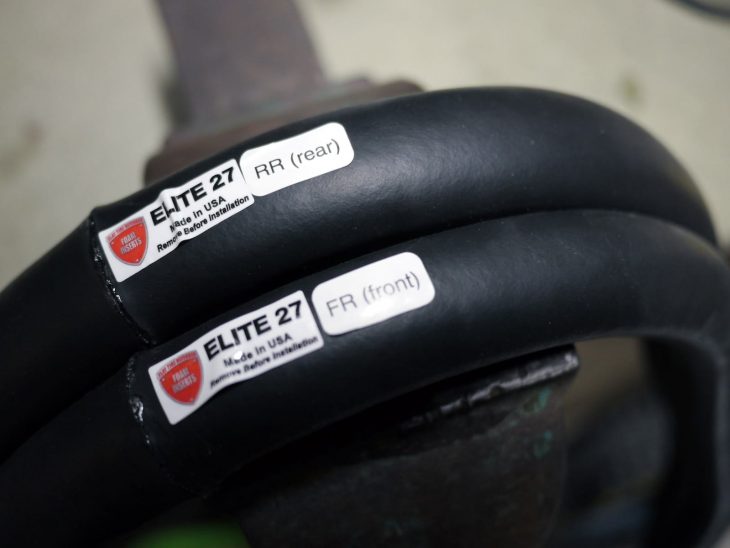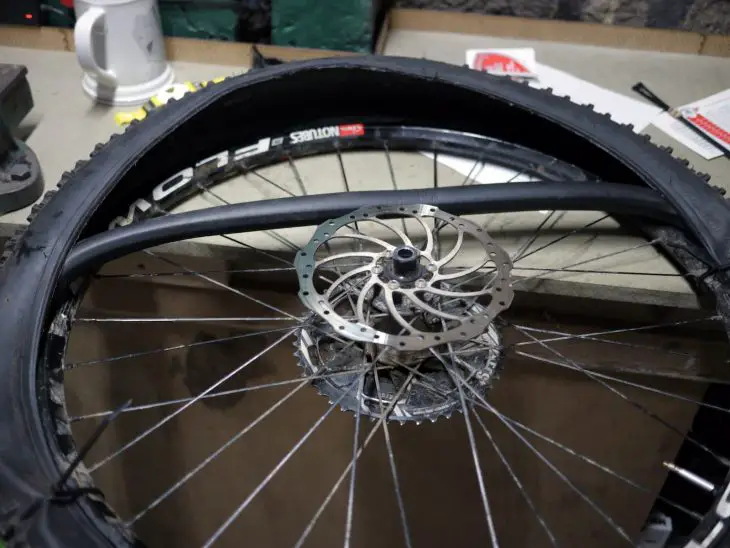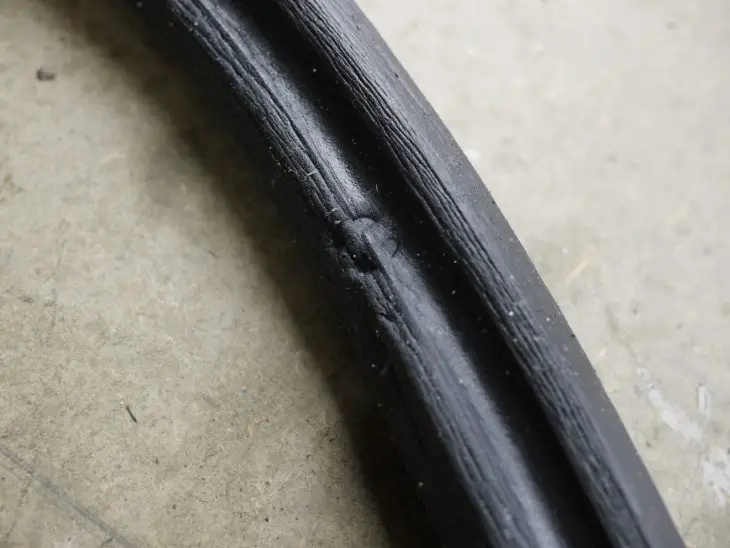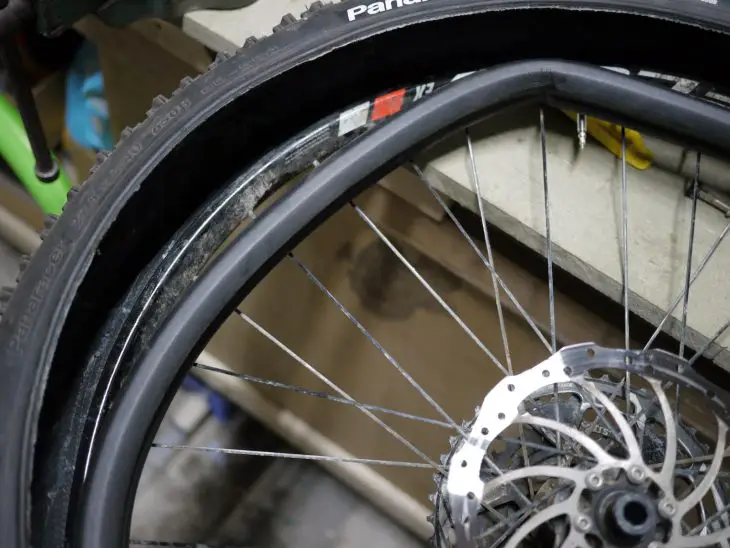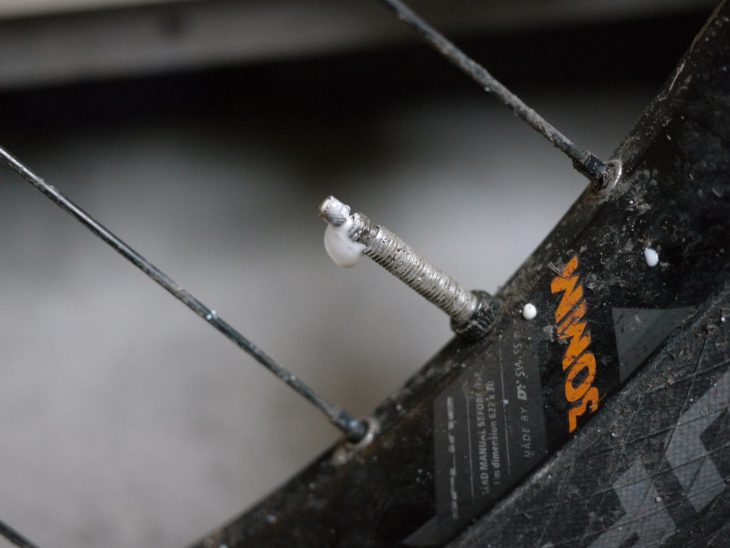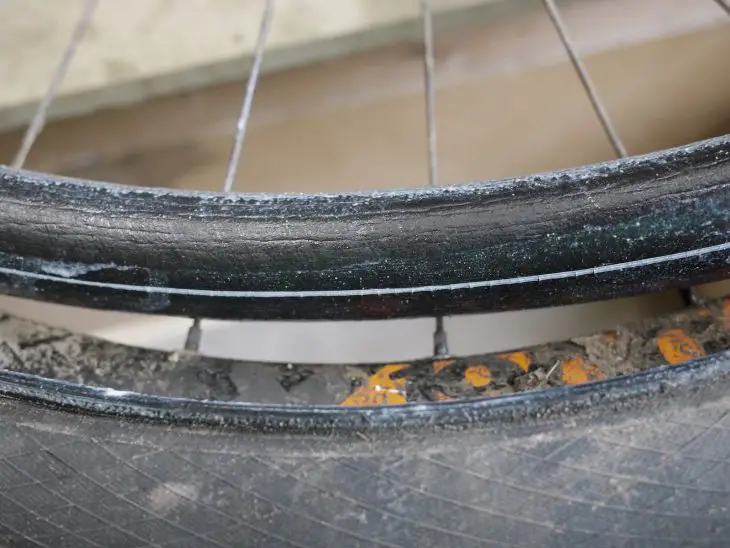Tubeless tyre inserts claim to offer additional protection for your mountain bike rim, so you can run lower tyre pressures for improved traction. The Flat Tire Defender is a US-made foam insert that is used by none other than a Mr Aaron Gwin. To find out if it’s all that and a bag o’ chips, we got our local rim-dinger, David Hayward, to put them through the grinder as part of a tubeless insert group test. Over to David!
Gimme an E! Gimme a P! Gimme a D! Gimme an M! What have you got? Ethylene propylene diene monomer rubber!
Yes.
Unlike the other foam tyre inserts in this group test, Flat Tire Defender is an EPDM foam rubber extrusion, which in comparison feels very different. If you’ve ever picked up a snake, you’ll know they actually feel quite warm, dry and strong. People who haven’t ever handled a snake though tend to imagine them as floppy and squishy. That’s what Flat Tire Defender feels like – an imaginary snake.
Initially, this squish, flop, and comparatively small cross sectional area didn’t fill me with confidence, so of course I threw it in a wheel and thrashed it down some things so rocky they barely qualify as trails. And in short, it works. It works much better than I expected it to, but I’m getting ahead of myself. First, let’s talk about fitting it.
Fitting The Flat Tire Defender
In the box you’ll find two inserts, of different weights, with the heavier of the two clearly marked as being for the back wheel. Along with that, you’ll find a pair of ‘no clog’ valves and four zip ties. These are Elite series inserts designed for an inner rim width of 28-35mm, and they make two other widths; the ET (22-27mm) & EB (36-40mm).
Confirmed weight for our test pair (without valves) was 206g for the front, and 239g for the rear. That’s around double the weight of the Panzer tubeless inserts I tested recently, but a touch lighter than a CushCore insert or a Vittoria Air-Liner.
Over the course of this test, I’ve fitted and refitted these on three separate occasions. Every time, in some way, it’s been painful. Figuratively, but also literally with actual pain in my hands. This is not an easy insert to fit, despite Aaron Gwin’s mechanic John Hall making it look that way in their fitting video:
I’ve become quite blasé about difficult tyre inserts during this group test. Even those that have a reputation for it, like CushCore, become easy once you know the method. Following the video above though, I have not had as much luck with these.
These inserts are tight. A fresh one will pull itself taught across the wheel when it’s just over halfway in. They’re so tight, they have a tendency to pull any tyre bead you insert back out as you work your way around.
I ended up using all four zip ties on one tyre just to keep the beads in – it gets so tight that with just two, a tyre lever can force the bead out even from under a zip tie. There are no bead stuffing tricks to ease this, just small bites and achey hands.
The second time I installed it, I got a friend to help, and with four hands it’s *way* easier to get the rubber in and stop tyre beads from straying.
That said, we did it fast and the insert twisted slightly, which became evident in two ways. It was blocking the valve, and it took a track pump to force air through. On uninstalling it, the insert had picked up an obvious imprint of the base of the valve.
The third time I installed it was at the end of this test, after whipping it out to take some of these photos. It seemed to have slackened over a month of use, stretching around the wheel and going into the rim well much more easily than before. I thought I finally had it in with ease, until I pumped it up and found that now there was a leak at the valve and the bead partway round.
Flat tyre in about 30 seconds. Sad face.
Attempt 4: The insert was a lot easier to push around inside the tyre this time. I swapped the valve for a different one with a proper rubber base – Flat Tire Defender’s valve bases seal with an o-ring, meaning that any over-tightening will squash it and cause a leak.
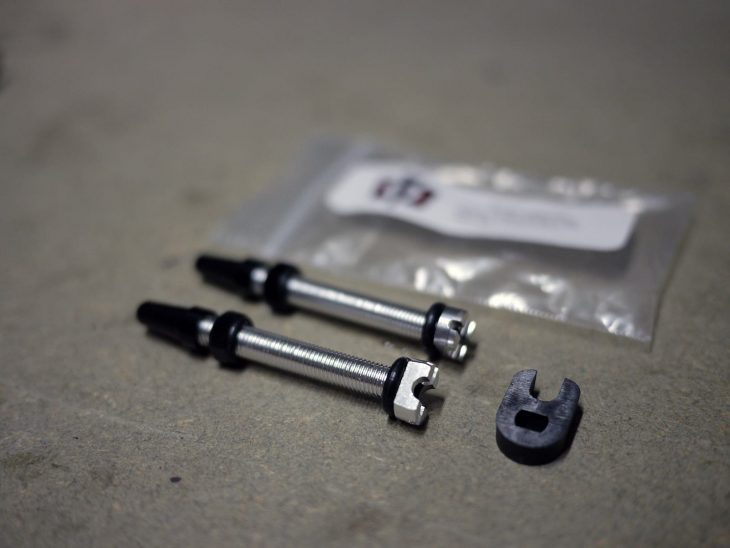
I was assuming I’d damaged the rim tape too, but a second attempt at inflation revealed a leak at the bead in an entirely different spot. Further investigation seemed to indicate the Flat Tire Defender itself was hugging things so tightly it was preventing sealant getting to every bit of the bead. Deflating, pushing that section of bead inward, and dumping a bit of sealant over the outside solved this.
While there are other things I’d recommend about Flat Tire Defender, ease of installation is not one of them. It is finicky and difficult.
Something went wrong every time – it twisted, it blocked the valve, it flatted, or it just made me want to scream in frustration at how much difficulty it can add to getting even the baggiest, most flexible tyre beads in. If you regularly change tyres, this is not the insert for you.
The Ride
On the first ride, I bashed my rear wheel to the point of getting audible dinks from the rim. With that, I noticed that Flat Tyre Defender results in a very different feeling when you bottom out a tyre. Until the very last fractions of a second, it acts exactly like a standard tubeless tyre setup, then for that last bit gives a very dull, rubbery feeling THUNK.
As well as that, it really locks the beads down well. One morning I was rushing to make it onto a train, and setting off noticed the rear tyre had gone down to some silly single-digit PSI. Good for testing I thought, at least on the 300 metre run to the station.
Taking the few corners on the way, I noticed how good the bead retention was – even at such absurdly low pressure. I’d feel the tyre start to roll over, then hit an abrupt, slightly springy stop as the insert held the sidewall out. At higher pressures, I felt no rollover at all and it seemed to support the tyres well.
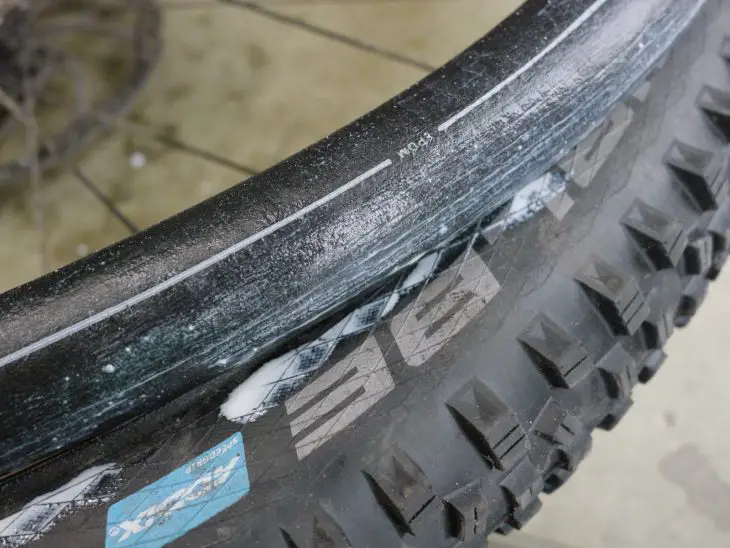
Over a month of riding, I ran pressures from around 14-17psi, putting it through all sorts of steps, drop offs, water bars, rock gardens, sniper rocks, and a whole bunch of railway bridge stair sets for good measure. I often felt that rubbery thunk, heard dings, but never flatted and there’s no rim damage either.
Each time I got the thunk, I thought the rim-rock combo must be trashing the insert, cutting it to ribbons, spraying crumbs of rubber foam around inside that tyre. It kept on working though, and eventually it was time to inspect it.
Pulling It Out
When deflating a tyre, I put the valve in the four or 8’o’clock position, which usually means sealant will run downward instead of out the valve, and if the rim drops into the tyre, the base of the valve won’t then go into a puddle of latex. With this though, because the insert is snugged up so close, doing this ejected a bit of sealant through it. There are better designs of ‘no clog’ valves in this group test, such as the CushCore and Rimpact ones that have closed bases and horizontal holes.
Once you remove a tyre bead, which is a little more difficult than with standard tubeless, the Flat Tire Defender pops off and out very easily (good tip from John Hall: Unscrew the valve nut, then use the valve to push the insert upward, freeing up some room for the bead to move into).
While the EPDM rubber is foam inside, the surface is very smooth, making it particularly good at shedding sealant. Wiping it down with a paper towel is enough. Though it will be a bit sticky, it seems to suffer a lot less with buildup than other inserts – including the plastic inner tyres of Schwalbe ProCore.
After the amount of abuse I’d put it through, and how soft it feels between finger and thumb, I expected this to be covered with slots and tears. On cleaning it I was surprised to find none. Nothing. The inserts were a bit wrinkly, but not cut up at all.
This is an impressive characteristic set against the other inserts in this test. Some give protection through their high density, some through their high volume. While this one isn’t the lightest, it does give a lot of protection considering its low density and low volume.
Overall
Flat Tire Defender gives an impressive amount of puncture protection, with solid bead retention to boot. Fitting it is much more difficult than other inserts though, and on that basis I find it hard to recommend. If you have your own race mechanic, it’s going to be great for you. If you find tyre mounting a frustrating exercise even without inserts, Flat Tire Defender definitely isn’t the one for you.
Interested to see what other tubeless inserts are available and how they perform? Check out all of our tubeless insert reviews right here!
Review Info
| Brand: | Flat Tire Defender |
| Product: | Elite 27.5 |
| From: | Madison, madison.co.uk |
| Price: | £134.99 |
| Tested: | by David Hayward for 6 weeks |
